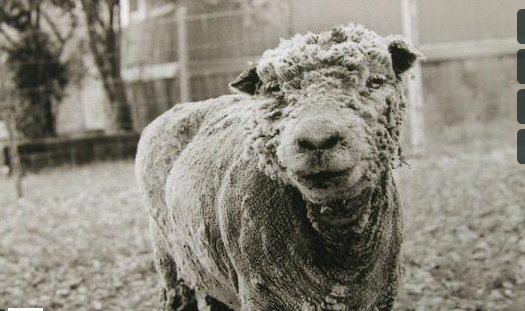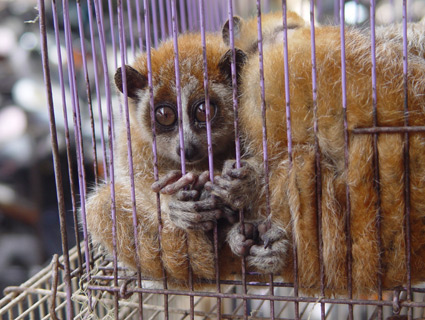Also read our timeline of pet fads and presidential pet quiz.
2 in 3 American households have pets; 1 in 3 has children.
In 2006, Americans spent nearly $45 billion on their pets. The pet industry is growing nearly twice as fast as the economy.
Industry analysts say the “recession-resistant” boom is fueled by empty nesters and singles who are putting off marriage and kids.
1/3 of women surveyed by the American Kennel Club agreed with the statement “If my dog was a man, he’d be my boyfriend!”
69% of owners let their pets sleep in their bed. Sleep-clinic patients who own pets report that 21% of dogs and 7% of cats snore.
PetSmart CEO Philip Francis and his wife share a bed with their pooch, Bit O’ Honey.
People can match photos of purebred dogs with photos of their masters 64% of the time.
1/3 of pet owners give their pets birthday presents; 2/3 give holiday gifts.
Americans spent $24.5 billion on pet health care in 2006. Popular canine meds include Eli Lilly’s beef-flavored “canine separation anxiety” drug, Reconcile, and Pfizer’s diet drug, Slentrol.
Pfizer claims that up to 40% of American dogs—17 million in all—are overweight.
15% of dog owners and 11% of cat owners bought urns for their pets’ ashes in 2006.
Oprah has denied rumors that she set aside a $30 million bequest for her five dogs.
Mr. Winkle, a mutt who has appeared on Sex and the City and the Today show, has gotten 74 million hits on his website and receives up to 50 emails a day.
More than 360,000 dogs are registered on the social-networking site Dogster.com. More than 150,000 cats have pages on Catster.com.
Pamela Anderson’s Chihuahua, Luca, “married” a golden retriever in a ceremony on the beach in Malibu in August 2005.
For $85/night, San Francisco’s Wag pet hotel offers suites for dogs with plasma TVs, paintings, and classical music. Blueberry facial scrubs are $30 extra.
Walt Disney World will open a pet resort next year including “nature hikes” and “pampering services ranging from ice cream treats to bedtime stories.”
The number of animal trainers has nearly tripled since 2000. Says the founder of the Association of Pet Dog Trainers, “the job is 90% people training.”
A bipolar Missouri man has a registered “service parrot” named Sadie. “When I start having anxiety attacks,” he says, “she’ll say, ‘Jim, I love you.'”
The iPond, a portable audio speaker combined with a 22-ounce aquarium, sparked outrage when it hit shelves in Australia last year. It is nearly 17 times smaller than the recommended tank size for a single small fish.
In January, the British prime minister’s office rejected a 12-year-old’s petition to allow elephants as backyard pets.
More than 650 million exotic animals were imported into the U.S. between 2003 and 2006.
Last December, a Kansas City man pleaded guilty to planning to smoke the dried venom of a Sonoran Desert toad to get high.
“Godzilla” is the most popular name for female pet reptiles. For males, it’s “Buddy.”
There are 5,000 tigers in captivity in the U.S.—the same number as are in the wild worldwide.
A New Yorker kept a Siberian tiger in his apartment for nearly two years before authorities took it away in 2003. “I miss him a lot,” lamented the owner. “He’s like my brother, my best friend, my only friend, really.”
Despite being mauled by his white tiger Montecore in 2003, Roy Horn of Siegfried & Roy visits him every week and calls him “my lifesaver.”



















